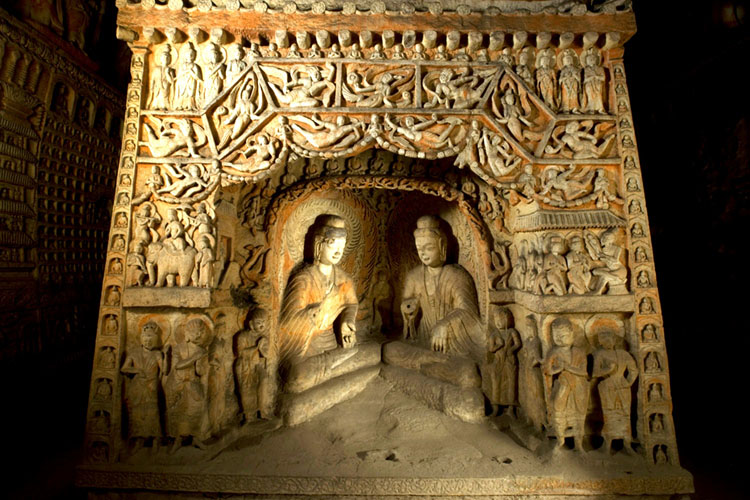Yungang Grottoes left rich historical legacy

The exquisitely carved Buddhas of Cave No. 6.
In 2001, the Yungang Grottoes were added to the World Cultural Heritage List by UNESCO, and China’s State Council classified the site as one of the first relic preservation units in 1961.
The World Heritage Committee has stated that the Yungang Grottoes are representative of outstanding Chinese Buddhist grotto art from the 5th to 6th century. They played a significant role in both Chinese and world art history. The Yungang Grottoes, Ajanta Caves in India and Bamiyan Caves in Afghanistan are known as the world’s three major treasure houses of stone carvings.
Although all the caves were created as a result of Buddhism, there were a number of other influences as well. The politics, economy, culture and lifestyles of the Northern Wei Dynasty all exerted a great influence on the Yungang Grottoes. They are not only a vivid example of the history of the Northern Wei Dynasty but also a record of the eastward spread of Indian Buddhism to China. In the Yungang Grottoes, people can see how Buddhist art became Sinicized.
Why did stonemasons carve Buddha statues on the rocks?
The Northern Wei Dynasty was founded by the Tuoba clan of Xianbei, an ethnic minority in North China. Emperors of the Northern Wei Dynasty went to Wuzhou Mountain to pray and regarded this mountain as holy. People in the Northern Wei Dynasty believed that wood can be burnt, gold can be melted but divine rocks endure for eternity. So the dynasty court chose the southern slope of Wuzhou Mountain as the location to carve out the Yungang Grottoes, in order to bless the royal family and the nation.
Why do the flying Apsaras carved in the caves look stout and strong?
In the No. 12 Cave of the Yungang Grottoes, a series of reliefs carved on the rocks vividly depict the images of Bodhisattva, musicians and flying Apsaras, along with other gods and goddesses of Buddhism. The images give off the feeling of a concert of deities, which is why the cave is also called the “Music Cave.”
In the Northern Wei Dynasty, there were no bowed string instruments and the majority of musical instruments at that time required plucking, striking or blowing. The “Music Cave” left a rich historical legacy which has helped historians understand the music of this period. In addition, the images of flying Apsaras carved in the caves look different from typical figures of beautiful fairies. They are more masculine, with stout and strong bodies, and represent the cultural elements of the Xianbei people, which placed an emphasis on raw power.
